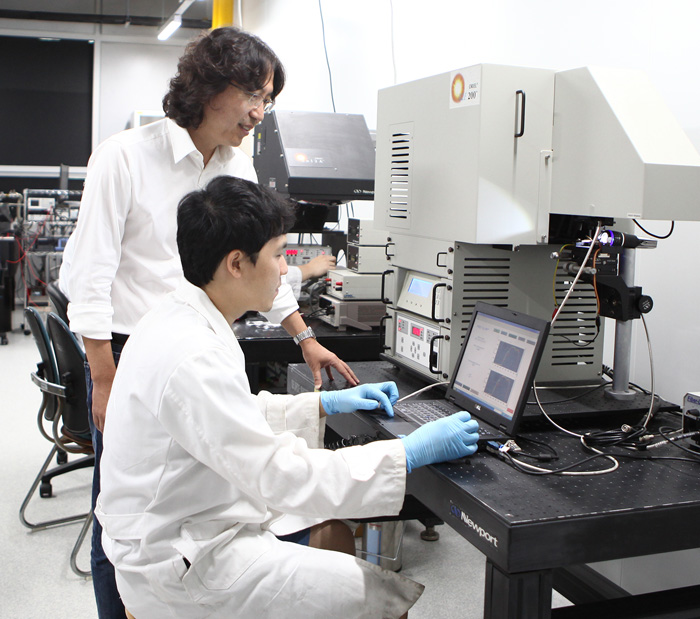Research Stories
Next generation perovskite solar cell with improved the efficiency and stability by utilizing the nickel oxide ultrathin
Researchers recently have focused on organic-inorganic hybrid perovskite materials that would allow low-cost and highly efficient photovoltaic since the power conversion efficiency (PCE) of this cell has rapidly increased from 2.2 % in 2008 to 22% in 2016.
Energy Science
Prof.
SHIN, HYUN JUNG
Researchers recently have focused on organic-inorganic hybrid perovskite materials that would allow low-cost and highly efficient photovoltaic since the power conversion efficiency (PCE) of this cell has rapidly increased from 2.2 % in 2008 to 22% in 2016. The device architecture is composed of electrodes, perovskite photo-active layer with charge transport layers as an interlayer. Although organic hole transport layers are usually used for hole extraction, it is very vulnerable to heat, light, and moisture. Alternatively, the researchers developed perovskite solar cells using inorganic NiO as HTL grown via atomic layer deposition (ALD). The team synthesized ultra-thin (~ 5 nm) NiO films having high transmittance as well as low series resistance, finally demonstrated stable and efficient perovskite solar cells. Researchers also studied to deposit highly dense electron transport layers (ETL) using ALD on top of perovskite in order to improve the stability of the perovskite solar cells. The highly dense ALD-ETL protects moisture transmission from outside greatly and also suppresses decomposition of perovskite from inside. They demonstrated highly stable perovskite solar cells using ALD-ETL without further encapsulation technique and performance loss. This work was published in the journals; Nanoscale (2016) and Nat. Energy (2016).

